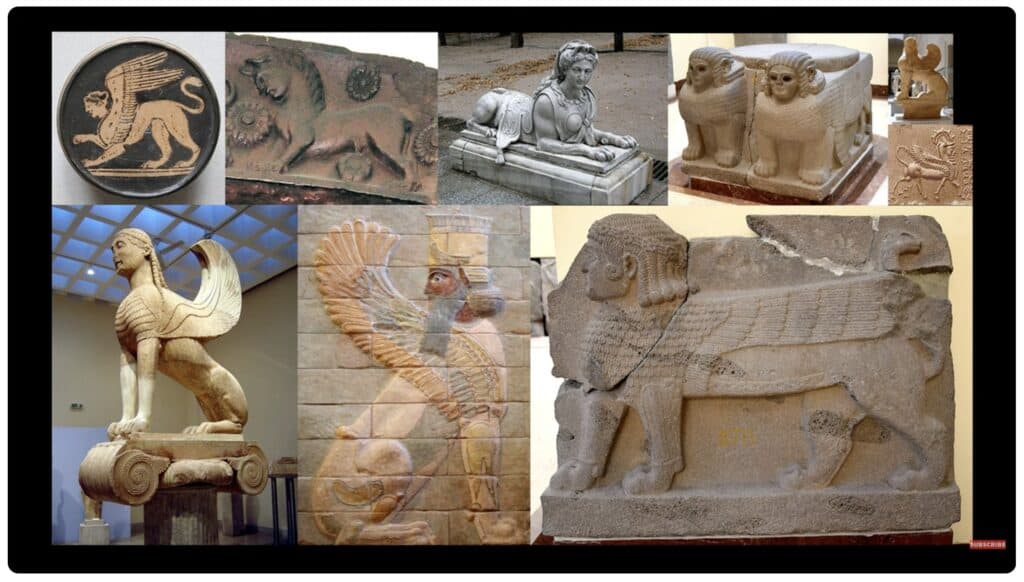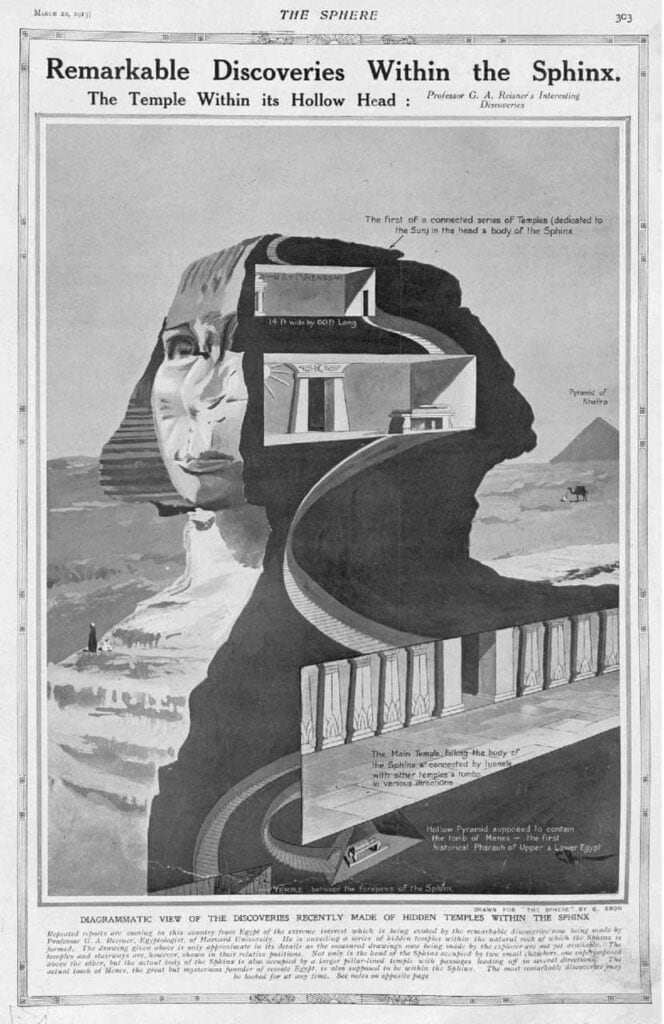Table of Contents
Dating of the Sphinx
Traditional Dating of the Sphinx
Conventional Egyptology dates the construction of the Sphinx to the Fourth Dynasty, around 2500 BC, during the reign of Pharaoh Khafre. This dating relies on indirect evidence rather than direct methods, as the Sphinx lacks inscriptions or datable artifacts. The association with Khafre is primarily based on:
- The Sphinx Stela: Erected by Thutmosis IV, which mentions Khafre, suggesting restoration during Khafre’s time rather than initial construction.
- Proximity to Khafre’s Pyramid: The Sphinx is located near Khafre’s pyramid, part of the Giza necropolis, a Fourth Dynasty site.
- Facial Resemblance: Some argue the Sphinx’s face resembles known statues of Khafre.
Graham Hancock
Hancock challenges this dating, proposing that the Sphinx is much older based on geological and historical analyses:
- Water Erosion Hypothesis: Along with geologist Robert Schoch, Hancock suggests the weathering patterns on the Sphinx and its enclosure indicate significant water erosion, implying it was carved in a much wetter climate, possibly before 10,000 BC (p. 408-411).
- Historical Accounts and Myths: Hancock references ancient Egyptian texts and myths that imply the Sphinx was ancient even in Khafre’s time, suggesting a much older date (p. 335-337).
- Recarving Hypothesis: There is a suggestion that the smaller head of the Sphinx was recarved during dynastic times, altering its original form to appear more pharaonic (p. 405-407).
Criticism of Conventional Views: Hancock argues that mainstream Egyptologists dismiss alternative theories about the Sphinx’s age due to their commitment to a linear model of history, viewing civilization as progressively advancing from simple to complex. He believes acknowledging an earlier date for the Sphinx would necessitate reevaluating ancient history and considering the existence of advanced prehistoric civilizations (p. 402-404).
Hancock’s views on the Sphinx challenge the traditional timeline of history and suggest a need to explore the possibility of advanced civilizations existing before the known Egyptian dynasties.
Source: Fingerprints of the Gods
Meaning of the Sphinx
Symbolism of the Sphinx:
- The Sphinx is described as having a lion’s body, a human head, the hooves of a bull, and wings. Each of these features represents one of the four classical elements:
- Lion’s Body: Symbolizes fire.
- Human Head: Represents water.
- Bull’s Hooves: Symbolize earth.
- Wings: Represent air.
Virtues for Inner Realization:
- These elements are associated with four necessary virtues for achieving the realization of the inner self:
- Courage of the Lion: Represents bravery and strength.
- Intelligence of the Human: Represents wisdom and understanding.
- Wings of the Spirit: Symbolize spiritual freedom and elevation.
- Tenacity of the Bull: Represents determination and perseverance.
- The synthesis of these virtues is necessary for personal spiritual development.
Cultural Significance:
- The Sphinx is not only an Egyptian symbol but is also found in various cultures, including Greece and Asia, suggesting a universal esoteric significance.
- The text alludes to the idea that ancient sages, possibly from Atlantis, who survived a cataclysmic event, were responsible for building many pyramids, including the Great Pyramid of Egypt. They are credited with spreading this ancient wisdom across different cultures.

Professor Schoch
In 1991, Professor Schoch scientifically dated the Sphinx to thousands of years prior to the time of the Egyptian pharaohs, having been constructed at the end of the last ice age. This places the statue at a time when the Saharan region was much more humid, lush with plant and animal life, and subject to persistent rainfall. And despite constant criticism from mainstream archeologists, he’s held his ground, showing seismic data of the region which suggests the Sphinx’s origin may be more accurately placed at 10,000 B.C.E.
Link to Atlantis
Emerald Tablet 5: The Dweller of Unal
Then gathered I the sons of Atlantis. Into the spaceship I brought all my records, brought the records of sunken Atlantis.
Gathered I all of my powers, instruments many of mighty magic. Up then we rose on wings of the morning. High we arose above the Temple, leaving behind the Three and DWELLER, deep in the HALLS ‘neath the Temple, closing the pathway to the LORDS of the Cycles. Yet ever to him who has knowing, open shall be the path to AMENTI. Fast fled we then on the wings of the morning, fled to the land of the children of KHEM. There by my power, I conquered and ruled them. Raised I to LIGHT, the children of KHEM.
Deep ‘neath the rocks, I buried my spaceship, waiting the time when man might be free. Over the spaceship, erected a marker in the form of a lion yet like unto man. There ‘neath the image rests yet my spaceship, forth to be brought when need shall arise.
Know ye, O man, that far in the future, invaders shall come from out of the deep. Then awake, ye who have wisdom. Bring forth my ship and conquer with ease. Deep ‘neath the image lies my secret. Search and find in the pyramid I built. Each to the other is the Keystone; each the gateway that leads into LIFE. Follow the KEY I leave behind me. Seek and the doorway to LIFE shall be thine. Seek thou in my pyramid, deep in the passage that ends in a wall. Use thou the KEY of the SEVEN, and open to thee the pathway will fall. Now unto thee I have given my wisdom. Now unto thee I have given my way. Follow the pathway. Solve thou my secrets. Unto thee I have shown the way.


